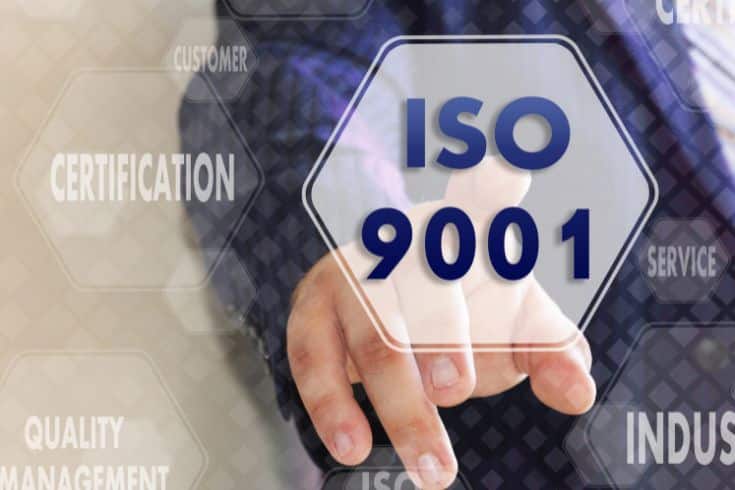Our Management Systems are extremely useful for quality management and are intended to help companies achieve their ISO certifications. ISO certifications are therefore one of the most important goals of quality, risk and process management, which is why we will go into more detail in this blog about a very well-known ISO, namely; ISO 9001.
What is ISO 9001?
Almost every business sector knows the ISO 9001 standard and this is for a reason. ISO 9001 is one of the most well-known international standards for Quality Management Systems. ISO 9001 is one of the many standards created by the global organization ISO (International Standardization Organization) and is intended to assess whether a company can meet the requirements of their customers. In Dutch, this standard is also called NEN-EN-ISO 9001, where NEN stands for the Dutch institution that adapts the standard and makes it available for the Dutch market and EN stands for the European institution that regulates ISO within Europe. The latest version of the ISO 9001 standard was published in 2015 and consists of 10 chapters, of which Chapters 4 to 10 contain the specific requirements that must be met in order to obtain ISO 9001 certification.
What does ISO 9001 entail?
ISO 9001 provides clear guidelines that must be included in a good quality management system. The standard stands for transparency, reliability and whether companies can actually do what they promise their customers! Why quality management? Quality management is a particularly important aspect within an organization and is therefore reflected in every business component of the process that brings your final product to the market. Good quality management therefore ensures that your company can meet all the needs, legislation, wishes and requirements of all stakeholders of your company. The ISO 9001 standard therefore helps companies to better manage, control, improve their processes and thus ultimately gain more control over their quality. So you start with quality management and then achieve ISO 9001 as proof of transparency and reliability.
The requirements of ISO 9001
But as you may have guessed, ISO 9001 is not just achieved and requires thorough preparations and a good quality management system. Once these two aspects have been achieved, the following standards are considered for ISO 9001 certification:
- The first standard (chapter 4) concerns how the organization functions in relation to its stakeholders and what possible risks exist within and around the organization in question. This standard therefore involves good stakeholder management and risk management.
- The second standard (chapter 5) concerns the responsibility and involvement of the board of directors, in particular, in the quality management system and quality policy. This standard requires the board of directors to demonstrate good leadership and take responsibility for creating and maintaining the quality policy. The board of directors must demonstrate their involvement through a documented policy statement that includes clear and concrete objectives of the policy.
- The third standard (chapter 6) is about planning your quality objectives and clarity about how you are going to achieve them. This standard requires that you make a correct and transparent planning for your quality management system and show concrete examples such as your audit plans, your plans for risk analyses, improvement plans or your training plans.
- The fourth standard (chapter 7) is about how you want to apply your quality management system in reality and which resources you make available for this. Think about which people are going to implement and execute your management system and have the appropriate qualities and competences for this and whether the appropriate environment is available to execute all objectives (e.g. hygiene, clothing, temperature, etc.).
- The fifth standard (chapter 8) is also seen as one of the most important standards for your ISO and concerns the actual execution of your quality policy and management system. This standard has a direct impact on all your main activities and shows whether you can make the operational planning and control run smoothly. With this standard it is important that you can adhere to your product/service requirements and that your associated communication with the customer runs smoothly. It is also important that all your relevant business processes are properly managed and executed.
- The sixth standard (chapter 9) concerns the evaluation of your quality policy. This standard measures customer satisfaction with your policy and examines how communication and cooperation with your suppliers is progressing. In addition, internal audits are performed to assess whether you have (still) complied with the requirements of ISO 9001. Finally, improvement opportunities for management will be examined; also known as the management review.
- The last standard (chapter 10) concerns all aspects of improving your company. This last aspect is crucial because it shows whether your company is concerned with documenting deviations from business processes and whether the correct measures have been taken for this. This standard therefore mainly concerns itself with continuous improvement. This concerns how the problems within your organization are structurally solved and whether all causes of the deviation are clearly recorded and analyzed.
Why ISO 9001?
Quality management is not only good for your business processes and business structure, but also helps your company to meet all the requirements/wishes and needs of your customer. With an ISO 9001 certificate you show that your quality policy meets all the requirements and show quality, reliability and transparency in your product or service to current and new customers. In addition, with quality improvement you can save costs because you are smarter about risks and deviations, you can increase your customer satisfaction and even increase your turnover.
How do I get an ISO 9001 certificate?
You can obtain an ISO 9001 certificate by having your company assessed by an independent, impartial and expert institution. You can always apply for an ISO certification, but it is advisable to do this after a careful quality policy in which all ISO standards are properly included.
INBISCO Quality management systems for ISO 9001
To ensure that you can implement an effective and ISO-worthy quality policy within your company, you naturally need a good quality management system. Our Management systems in process, risk and quality management have been developed with ISO 9001 as their basis and are therefore the perfect management system for achieving ISO 9001. With our management systems you create insight, structure and transparency in all your business processes, you can trace, report, register and manage deviations and perform risk analyses to find out where possible pitfalls or opportunities for improvement lie.

